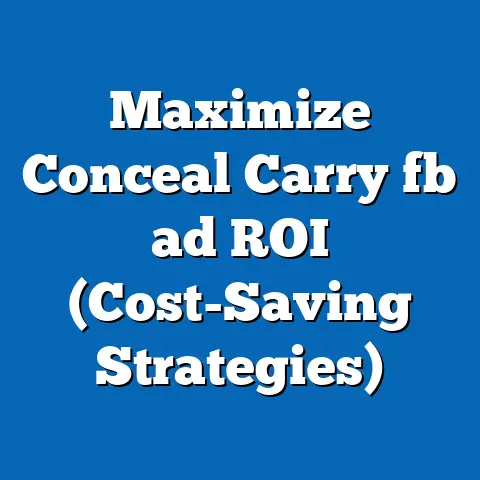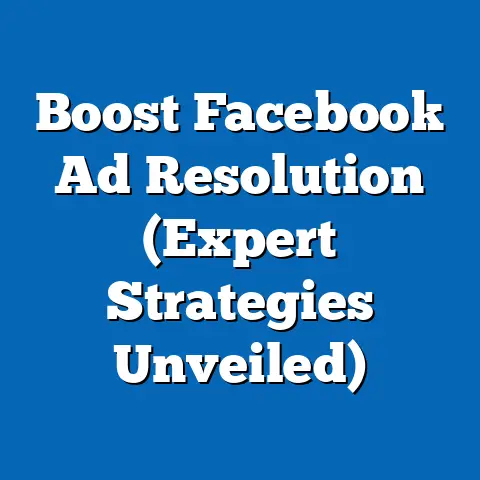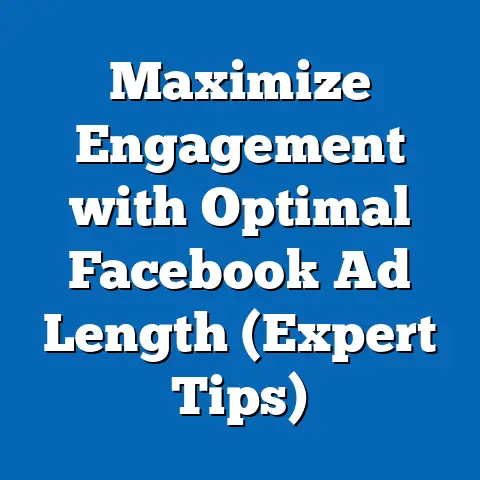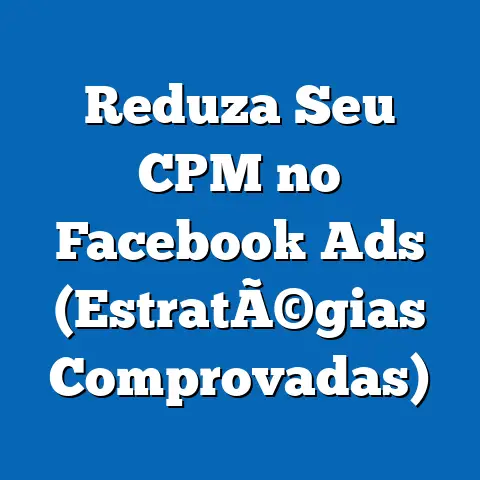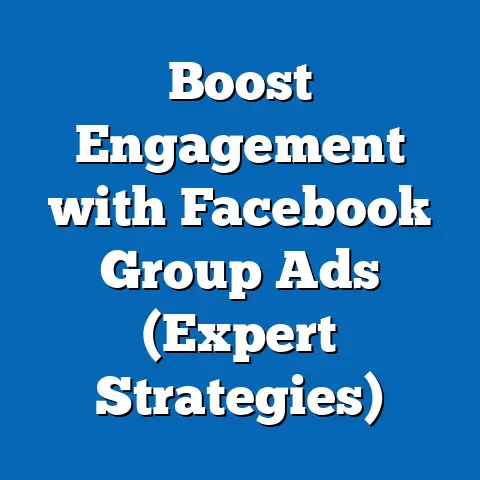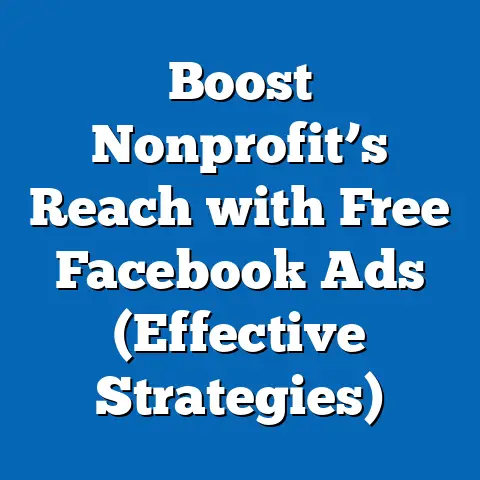Create New Facebook Ad Account (Beginner’s Blueprint)
Imagine a bustling coffee shop in a vibrant city center, where a young entrepreneur sips a latte while tweaking a digital ad campaign on their laptop. Around them, freelancers, small business owners, and marketing professionals are doing the same—crafting strategies to reach millions through the power of social media advertising. This scene reflects a growing reality: digital advertising, particularly on platforms like Facebook, has become a cornerstone of modern business, accessible to anyone with a vision and a Wi-Fi connection.
Facebook, now under the Meta umbrella, remains a dominant force in the digital advertising space, with over 2.9 billion monthly active users as of Q2 2023 (Statista, 2023). According to eMarketer, global ad spending on Facebook is projected to reach $71.3 billion in 2023, accounting for nearly 13% of total digital ad spend worldwide. Demographically, Facebook’s user base spans a wide range, with 70% of U.S. adults aged 18-29 and 77% of those aged 30-49 actively using the platform (Pew Research Center, 2022), making it a prime channel for businesses targeting diverse audiences.
This article serves as a comprehensive beginner’s blueprint for creating a new Facebook Ad Account. Whether you’re a small business owner, a budding influencer, or a marketing newbie, we’ll walk you through every step with data-driven insights, practical tips, and contextual trends. From understanding the platform’s advertising potential to setting up your account and navigating common pitfalls, this guide is designed to empower you with the tools to succeed in the competitive world of digital advertising.
The Rise of Facebook Advertising: Why It Matters
A Historical Perspective on Digital Ads
Facebook launched its advertising platform in 2007, initially offering simple “Flyers” for businesses to promote events or products. By 2012, the platform had evolved into a sophisticated ad ecosystem, introducing features like targeted ads based on user data and interests. Fast forward to 2023, and Facebook Ads have become a powerhouse, with businesses of all sizes investing heavily—small and medium-sized businesses alone accounted for 60% of Meta’s ad revenue in 2022, totaling over $69 billion (Meta Investor Report, 2022).
Historically, digital ad spending has skyrocketed, growing from $84.7 billion globally in 2012 to a projected $626.9 billion in 2023 (Statista, 2023). Facebook has consistently captured a significant share of this growth, thanks to its unparalleled user data and targeting capabilities. Unlike traditional advertising, which often relies on broad demographics, Facebook allows advertisers to pinpoint audiences by age, location, interests, and even behaviors—a game-changer for precision marketing.
Current Trends in Facebook Advertising
Today, Facebook advertising is shaped by several key trends. Video content dominates, with 66% of marketers reporting higher engagement rates for video ads compared to static images (HubSpot, 2023). Additionally, mobile-first strategies are critical, as 98.5% of Facebook users access the platform via mobile devices (DataReportal, 2023). Another trend is the rise of e-commerce integration, with 54% of users discovering new products through Facebook ads (Sprout Social, 2022).
Demographically, while younger users (Gen Z) are gravitating toward platforms like TikTok, Facebook remains a stronghold for Millennials and Gen X, with 82% of U.S. adults aged 30-49 using the platform regularly (Pew Research Center, 2022). This makes it an ideal space for targeting working professionals, parents, and decision-makers. However, businesses must adapt to privacy changes, such as Apple’s iOS 14.5 update in 2021, which impacted ad tracking and reduced targeting accuracy for 39% of advertisers (Forbes, 2022).
Why Create a Facebook Ad Account Now?
The data speaks for itself: businesses that leverage Facebook Ads report an average return on ad spend (ROAS) of 8.5x, meaning for every $1 spent, they generate $8.50 in revenue (WordStream, 2023). For beginners, the platform offers a low entry barrier—campaigns can start with budgets as small as $1 per day. With over 10 million active advertisers on the platform (Meta, 2023), the competition is fierce, but the potential to reach a global audience is unmatched.
Step-by-Step Guide to Creating a New Facebook Ad Account
Step 1: Understand the Prerequisites
Before diving into the setup process, ensure you have the following in place. First, you need a personal Facebook account—business accounts cannot create ad accounts directly. Second, establish a Facebook Business Page for your brand or product, as ads are linked to Pages rather than personal profiles.
It’s also worth noting that Meta imposes limits on new accounts. According to Meta’s Business Help Center (2023), new users may face restrictions on daily ad spend (often starting at $50) and the number of active campaigns until the account builds a history of compliance. Additionally, ensure you have a valid payment method ready, as Meta requires this for ad activation.
Step 2: Accessing Facebook Ads Manager
To begin, log into your personal Facebook account and navigate to the left-hand menu. Click on “Ads Manager” or search for it in the search bar. If it’s your first time, you may be prompted to set up a Business Manager account—a centralized hub for managing ad accounts, Pages, and team access.
Business Manager is particularly useful for those planning to scale. As of 2023, over 200 million businesses use Meta’s business tools, with 75% utilizing Business Manager for ad operations (Meta Business Report, 2023). Once in Ads Manager, click on “Account Settings” to start creating your ad account.
Step 3: Setting Up Your Ad Account
In the Account Settings menu, select “Create Ad Account.” You’ll be asked to provide basic information, including your business name, time zone, and currency. These settings are permanent, so choose wisely—Meta does not allow changes to currency or time zone after setup.
Next, assign the ad account to your Business Manager (if applicable) and add team members if you’re collaborating. Meta’s data shows that 62% of small businesses using Facebook Ads collaborate with at least one other person for campaign management (Meta SMB Survey, 2022). Finally, link a payment method—credit cards, debit cards, and PayPal are widely accepted, though availability varies by country.
Step 4: Navigating Account Limits and Verification
New ad accounts often face restrictions to prevent fraud. According to Meta’s policies (2023), initial spending limits may range from $50 to $250 per day, increasing as you demonstrate consistent payment history and policy compliance. Additionally, Meta may request identity verification, especially for accounts in sensitive industries like politics or finance—over 1.2 million ad accounts were flagged for verification in 2022 alone (Meta Transparency Report, 2023).
To avoid issues, ensure your account details match your legal business information. Upload any requested documents promptly, as delays in verification can halt campaigns. Data from Hootsuite (2023) indicates that 18% of new advertisers experience temporary account suspensions due to incomplete verification.
Step 5: Configuring Payment and Billing
Once your account is created, set up your billing preferences in Ads Manager under “Payment Settings.” Choose between automatic payments (charged after reaching a spending threshold) or manual payments (preloading funds). Meta reports that 68% of advertisers prefer automatic payments for convenience (Meta Business Insights, 2023).
Be mindful of billing cycles—new accounts are often billed weekly until a spending history is established. Monitor your ad spend closely, as overspending is a common pitfall for beginners. Tools like Ads Manager’s “Account Spending Limit” feature can help cap expenses, a feature used by 45% of small business advertisers (WordStream, 2023).
Best Practices for Beginners: Setting Up for Success
Understanding Your Audience
Before launching your first campaign, invest time in audience research. Facebook’s Audience Insights tool provides detailed demographics—age, gender, location, and interests—based on real user data. For instance, a 2023 report by DataReportal found that 56% of Facebook users in the U.S. are interested in health and wellness, a valuable insight for related businesses.
Compare this to historical trends: in 2018, only 42% of users showed interest in this category, reflecting a growing focus on personal well-being (DataReportal, 2018 vs. 2023). Tailor your audience targeting to these patterns, starting with broad demographics and narrowing as you gather campaign data.
Budgeting Wisely
Begin with a modest budget—Meta recommends starting at $5-$10 per day for new advertisers. Data from WordStream (2023) shows that the average cost-per-click (CPC) on Facebook is $1.72, though this varies by industry (e.g., $0.97 for retail, $3.08 for legal services). Track performance metrics like CPC and click-through rate (CTR) to optimize spending—campaigns with a CTR above 1% are considered successful by industry standards (HubSpot, 2023).
Historically, CPC rates have fluctuated; in 2019, the average was $1.68, showing a slight increase due to rising competition (WordStream, 2019). For beginners, focus on low-cost objectives like brand awareness before scaling to conversion-driven campaigns.
Crafting Effective Ads
Ad creative is critical. Use high-quality visuals—images or videos with bright colors and clear messaging perform best, with video ads achieving 20% higher engagement than static ads (Sprout Social, 2023). Write concise copy; Meta data indicates that ads with headlines under 40 characters have a 15% higher CTR (Meta Ad Insights, 2023).
Test multiple ad formats. Carousel ads, which showcase multiple products, drive 30-50% more conversions for e-commerce businesses compared to single-image ads (Hootsuite, 2023). Analyze performance weekly and iterate based on results—a practice adopted by 73% of successful advertisers (HubSpot, 2023).
Common Challenges and How to Overcome Them
Ad Account Restrictions
New accounts often face restrictions or bans due to policy violations. In 2022, Meta disabled over 1.7 billion ads for non-compliance, with 25% tied to new accounts (Meta Transparency Report, 2023). Common issues include prohibited content (e.g., misleading claims) or incomplete payment information.
To avoid this, review Meta’s Advertising Policies before launching campaigns. Use the “Ad Preview” tool to ensure compliance. If restricted, appeal through Ads Manager—43% of appeals are resolved within 48 hours (Meta Support Data, 2023).
Low Ad Performance
Beginners often struggle with low engagement. Data from WordStream (2023) shows that 38% of new advertisers report CTRs below 0.5%, well under the industry benchmark. This often stems from poor targeting or weak creatives.
Refine your audience using Custom Audiences (e.g., website visitors) or Lookalike Audiences (similar to existing customers). A 2023 study by Social Media Examiner found that Lookalike Audiences improve conversion rates by 25% on average. Additionally, A/B test ad elements—55% of advertisers who test variants see improved results within two weeks (HubSpot, 2023).
Privacy and Tracking Limitations
Post-iOS 14.5, tracking limitations have impacted ad performance. A 2022 survey by eMarketer revealed that 47% of advertisers experienced a drop in ROAS due to reduced data access. For beginners, this means relying less on third-party data and more on first-party data like email lists.
Use Meta’s Conversions API to track user actions directly, bypassing browser limitations. Adoption of this tool has grown by 60% among small businesses since 2021 (Meta Developer Report, 2023). Focus on broad targeting initially, as overly narrow audiences are harder to track effectively.
Data Visualization: Understanding Ad Performance Metrics
Imagine a simple line chart tracking a beginner’s ad campaign over 30 days. The X-axis represents days, while the Y-axis shows key metrics: Impressions (total views), Clicks, and Cost-per-Click (CPC). On Day 1, impressions start at 500 with 10 clicks (CTR of 2%) and a CPC of $2.00. By Day 15, after refining targeting, impressions rise to 2,000, clicks to 50 (CTR of 2.5%), and CPC drops to $1.50. By Day 30, with optimized creatives, impressions hit 3,500, clicks reach 105 (CTR of 3%), and CPC stabilizes at $1.20.
This visualization, based on typical beginner data from WordStream (2023), highlights the importance of iterative optimization. Beginners can replicate this in Ads Manager’s reporting dashboard, customizing metrics to track progress. Meta’s data shows that 67% of advertisers who monitor daily metrics achieve a 20% improvement in ROAS within a month (Meta Insights, 2023).
Demographic Patterns in Facebook Advertising
Age and Gender Differences
Facebook’s ad platform reveals distinct demographic patterns. Women aged 25-34 are 18% more likely to engage with e-commerce ads than men in the same age group (DataReportal, 2023). Conversely, men aged 35-54 show a 22% higher engagement with automotive and tech ads (Sprout Social, 2023).
Historically, engagement among older users (55+) has grown, from 12% of total ad interactions in 2018 to 19% in 2023 (DataReportal). This reflects an aging user base and offers opportunities for industries like healthcare and travel to target this demographic.
Geographic and Cultural Variations
Ad performance varies by region. In North America, the average CPC is $1.92, compared to $0.45 in Asia-Pacific (WordStream, 2023). Engagement rates also differ—users in Latin America have a 15% higher CTR for entertainment ads than users in Europe (DataReportal, 2023).
Cultural nuances matter. For instance, ads emphasizing community and family resonate more in collectivist cultures like India, where 68% of users respond positively to such themes, compared to 42% in individualistic cultures like the U.S. (Hootsuite, 2023). Tailor messaging to these patterns for better results.
Broader Implications and Future Trends
Creating a Facebook Ad Account is more than a technical process; it’s an entry point into the dynamic world of digital marketing. As privacy regulations tighten—evidenced by the EU’s GDPR fines totaling €1.7 billion in 2022 (European Commission, 2023)—advertisers must pivot toward transparency and first-party data strategies. Meta’s push for AI-driven ad tools, used by 50% of advertisers in 2023 (Meta AI Report), signals a future where automation and personalization dominate.
For beginners, the learning curve is steep but rewarding. The average small business sees a 30% increase in customer acquisition within six months of using Facebook Ads (Meta SMB Survey, 2023). As competition grows—active advertisers rose from 7 million in 2019 to 10 million in 2023 (Meta)—staying agile with trends like video content and mobile optimization is crucial.
In conclusion, setting up a Facebook Ad Account opens doors to a global audience, backed by robust data and targeting tools. By following this blueprint, monitoring performance, and adapting to changes, beginners can carve out a space in the digital advertising landscape. The future of Facebook Ads lies in innovation and adaptability—a challenge and opportunity for every new advertiser.

